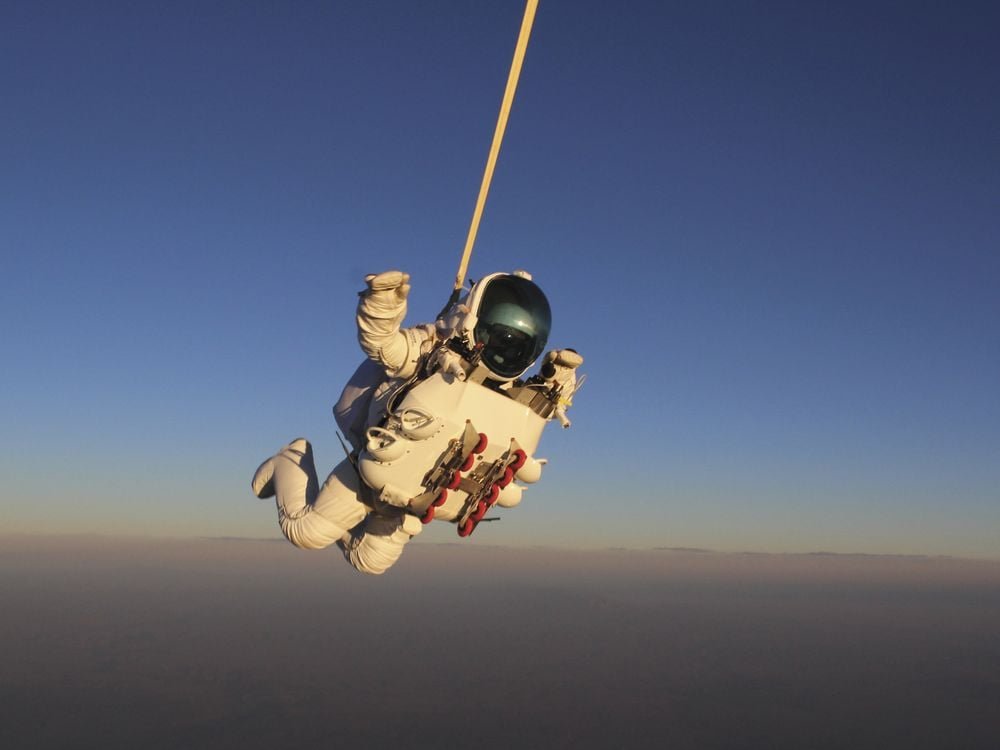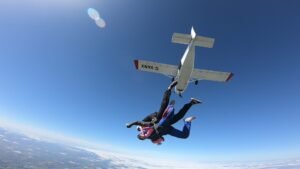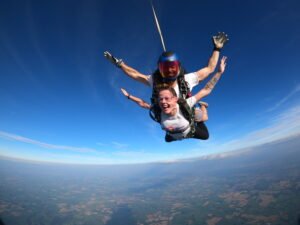Highest Free Fall Skydive
Ever wondered how far someone can fall before pulling their parachute?
I have.
What’s the highest free fall skydive ever recorded?
That’s what we’re digging into.
Let’s get straight to it.
What Constitutes the Highest Free Fall Skydive?
The highest free fall skydive refers to a jump where the primary focus is the distance covered in free fall before parachute deployment.
It’s about maximizing the time and distance spent falling freely.
Not just the starting altitude.
It’s about pure freefall.
Who Holds the Record for the Highest Free Fall Skydive?
Alan Eustace holds the current record for the highest free fall skydive.
He jumped from an altitude of 135,890 feet (41.422 km) on October 24, 2014.
This jump was part of the Stratospheric Explorer mission.
It was a privately funded project.
Designed to study the stratosphere.
Eustace’s free fall lasted approximately 4 minutes and 27 seconds.
He reached a top speed of 822 mph (1,323 km/h).
That’s seriously fast.
The Highest Free Fall Skydive: Breaking Down Eustace’s Jump
Eustace’s jump was a complex operation.
Here’s a simplified breakdown:
- The Ascent: He ascended in a helium balloon. No capsule. Just him and his suit.
- The Suit: He wore a specially designed pressurised suit. Absolutely essential for survival at that altitude.
- The Release: He detached himself from the balloon using an explosive bolt.
- The Free Fall: He plummeted towards Earth for over four minutes.
- The Drogue Parachute: A small drogue parachute was deployed to stabilize his descent and prevent him from spinning.
- The Main Parachute: He deployed his main parachute at a safe altitude for landing.
The Highest Free Fall Skydive: Why It’s Significant
Eustace’s jump wasn’t just about breaking a record for the highest free fall skydive.
It had scientific value.
The data collected during the mission provided valuable insights into the stratosphere.
Including atmospheric conditions and the effects on the human body.
It also showcased advancements in high-altitude suit technology.
The Highest Free Fall Skydive in History: The Challenges Involved
Performing a highest free fall skydive from such an altitude presents significant challenges:
- Extremely Low Air Pressure: At that height, there’s barely any air to breathe. A pressurised suit is vital.
- Extremely Low Temperatures: Temperatures can drop to -70°C (-94°F). Exposure without protection would be fatal.
- Risk of Hypoxia (Oxygen Deprivation): Without a constant supply of oxygen, consciousness is quickly lost.
- Risk of Ebullism (Boiling of Bodily Fluids): The extremely low pressure can cause bodily fluids to boil if not properly protected.
- Controlling Descent: Maintaining a stable descent is crucial to avoid dangerous spins.
These risks are not trivial.
The Highest Free Fall Skydive Compared to Other High-Altitude Jumps
While Eustace holds the record for the highest free fall skydive, other notable jumps have taken place:
- Joseph Kittinger: His 1960 jump was a pioneering effort in high-altitude skydiving.
- Felix Baumgartner: His 2012 jump focused on breaking the sound barrier in free fall.
These jumps, including the highest free fall skydive, demonstrate the ongoing drive to push the boundaries of human achievement.
The Highest Free Fall Skydive: A Feat of Human Engineering and Courage
The highest free fall skydive is a testament to human ingenuity and bravery.
It involves complex engineering.
And immense personal courage.
It’s about confronting extreme conditions.
And pushing the limits of what’s considered possible.
It’s about the highest free fall skydive ever.
FAQs about the Highest Free Fall Skydive
- Who holds the record for the highest free fall skydive? Alan Eustace.
- What altitude was the highest free fall skydive performed from? 135,890 feet (41.422 km).
- When did the highest free fall skydive take place? October 24, 2014.
- How long was the free fall during the highest free fall skydive? Approximately 4 minutes and 27 seconds.
- What was the purpose of the Stratospheric Explorer mission? To study the stratosphere.
Highest Free Fall Skydive vs. Highest Skydive
It’s important to distinguish between these two.
The highest skydive refers to the jump from the highest altitude.
The highest free fall skydive specifically focuses on the longest distance covered in free fall.
They’re related but distinct.
The Highest Free Fall Skydive: A Final Thought
A symbol of human ambition.
It shows what can be accomplished with careful planning, advanced technology, and unwavering determination.
It’s an inspiring story.
It’s about the highest free fall skydive.
Another article “Space Dive“





